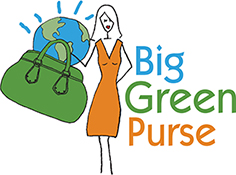Insulating your home is probably the most important step you can take to use less energy and save money on heating and cooling bills. The United Kingdom has created a series of financing programs to help homeowners afford home energy insulation that create a great model other communities and countries could follow. Even though there are still some kinks in the system, they’re worth examining. Here’s how two of them work, courtesy of Well Warm, a company that provides home energy insulation services.
To do its part to stop climate change, the UK has set specific goals to reduce its carbon footprint, which is the amount of carbon dioxide released into the atmosphere when fossil fuels like coal, oil and natural gas are burned. The government is focusing on buildings because so many homes, apartment buildings, offices, and other structures are poorly insulated and have inefficient heating systems. In fact, in an average home, more than 40% of the heating energy escapes through the roof and walls. The idea is that helping to finance insulation will make homes and workplaces more comfortable and cheaper to heat, while reducing carbon emissions nationwide.
What are the programs?
There are two government initiatives: ECO, and Green Deal. Both are focused on providing financing, ECO as grants and Green Deal as loans, to help homeowners and building managers pay for energy-saving measures like insulation, improvements to heating systems, draft-proofing, double glazing windows, solar panels or heat pumps, or some combination thereof.
How does Green Deal work?
A homeowner or building manager uses either an online tool or a certified Green Deal assessor (like Well Warm) to determine what energy-saving improvements would be most beneficial. (Some assessors charge a fee; others do it for free.)
After the assessment, the homeowner receives a Green Deal advice report that contains an Energy Performance certificate that rates the home for energy efficiency. It recommends specific improvements and also details the amount of money that could be saved on annual energy bills if the recommended steps are taken. Based on the report, the homeowner can get a quote for the cost of the insulation and other actions. The Green Deal program then provides financing so the homeowner can borrow the money needed to pay for the insulation.
The loan plus whatever interest rate is set at the time is repaid through a charge added to the electricity bill. The payment for the insulation is meant to match the savings that will be made from former energy bills, so is intended to upgrade homes at no added cost to the customer. If the homeowner sells the home, the loan transfers with the property so it continues to be repaid through the utility bill. This interactive graphic produced by TheGuardian.com lets you click on different energy efficiency measures to get a sense of what the average savings by month/year could be by installing such measures.
How does ECO work?
ECO stands for Energy Company Obligation. This program is specifically designed to help homeowners on public assistance still be able to afford retrofits that will save them money by using less energy. It is not a loan program like Green Deal and does not need to be paid back. Funding is available for a range of energy saving measures, including heating and hot water systems and different types of insulation and glazing.
Do programs like Green Deal and ECO make a difference?
Anytime a building is insulated, that’s good! However, the Green Deal program in particular has a few kinks to work out before it reaches its potential. Many householders are reluctant to pay for the initial assessment if they can’t find a free assessor. The interest rate on the loan can be so high that it loses its appeal. Plus, many people still don’t understand the importance of reducing home energy demand or how they can take advantage of the program. Hopefully, Green Deal program mangers will figure out a more reasonable financing package and explain the program’s costs and benefits, as energy prices will only increase and the pollution impact of burning fossil fuels is never going to change.
Note: Sponsorships allow us to provide valuable information at no cost to you. Our editorial opinions remain our own.


















